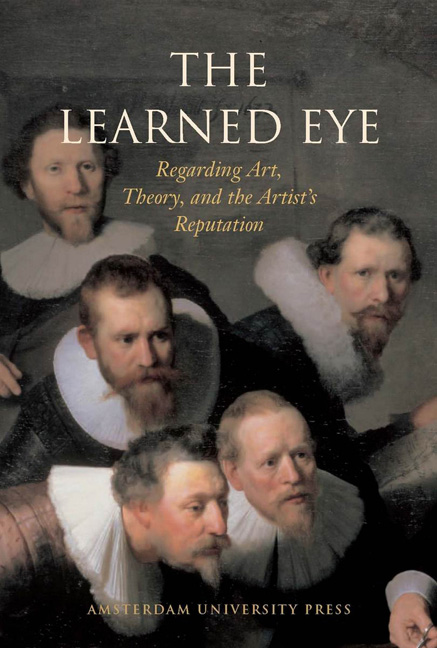Introduction: The Learned Eye
Published online by Cambridge University Press: 25 January 2021
Summary
‘In painting one has to have learned eyes.’ This is one of the Paradoxa formulated by Cicero, a phrase that was taken up eagerly by authors writing on painting in the Italian Renaissance, looking for classical authorities to quote from. It was also rephrased by Dutch theorists of the seventeenth century and adapted to the art of their time. Franciscus Junius, in the Dutch edition of his The painting of the ancients, talks about the necessity of ‘een Konst-gheleerd oogh’ – ‘a learned eye’. Junius was not a painter himself but a philologist with a dilettante's experience in drawing; he wrote mainly on behalf of art-lovers or liefhebbers. Interestingly, he is of the opinion that in talking intelligently about art and its values, it is not enough to cite from a stock of quotations with wisdom from classical antiquity, or any other source from the humanist curriculum. No, it is indispensable to have a profound knowledge of the art of painting itself. In the first place, this means that we have to learn how to look. We have to start with the work of art itself.
Junius interprets Cicero in this new way: ‘there is a certain kind of eye, which we can call in Aelianus’ words artful or art-learned eyes (Konst-gheleerden ooghen)’. Junius continues in the English edition of his book: ‘it doth then appeare that it is not enough wee should have eyes in our head as other men have, but it is also required here that we should bring to these curiosities “eruditos oculos”, that is, “learned eyes”, as Tullie [Cicero] termeth them.’
But how do we obtain ‘geleerde oogen in 't hooft’ or ‘learned eyes in the head’, as Willem Goeree still formulates in 1682? Junius is very explicit on this. Although his treatise is mainly filled with references to the writings on literature, rhetoric and history of antiquity, he is convinced that in essence it is only the artist himself who is the final authority, and, sidestepping a surplus of bookish oratory, becomes the most eloquent spokesman for art. Junius states that ‘none but an Artificer can judge of a Painter, Carver, Caster in brasse, or worker in clay’.
- Type
- Chapter
- Information
- The Learned EyeRegarding Art, Theory, and the Artist’s Reputation, pp. 9 - 12Publisher: Amsterdam University PressPrint publication year: 2005

